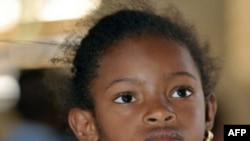Every year, more than three million girls in Africa, Asia, the Middle East and in a number of communities in the West are at risk of being subjected to Female Genital Mutilation/Cutting, or FGM/C. According to the World Health Organization, as many as 100 to 140 million girls and women worldwide currently live with the consequences of this cruel and dangerous practice.
This practice has no basis in any religion, and has no beneficial health effects. It is driven by socio-cultural, psychosexual, chastity, religious and aesthetic or hygienic arguments. Almost all of these are linked to girls’ social status and marriageability. Girls and women who are not cut suffer stigmatization
The procedure, which involves the partial or total removal of the external genitalia, is mostly performed on girls between just a few days old and age 15. It is extremely painful and generally carried out without the use of anesthetics. It is frequently done using items ranging from kitchen knives and razor blades to cut glass and sharp rocks. And it carries significant health risks, including death from blood loss and serious infection that can cause long-term problems. FGM/C may result in infertility, fistula and incontinence, complicate pregnancy and increase the risk for obstetrical problems and infant death.
Since 1997, when the World Health Organization issued a joint statement with the United Nations Children’s Fund and the United Nations Population Fund against the practice, a great effort has gone into counteracting FGM/C. Of the 28 African countries where FGM/C is practiced, 22 passed laws or provisions banning it, as did 12 industrialized countries with migrant populations from FGM/C-practicing countries.
FGM/C is also found in a few countries in the Middle East and Asia. While prevalence of FGM/C has decreased, every year, millions of girls still undergo this excruciating procedure.
Community based approaches, engaging men, boys, religious leaders, mothers, grandmothers and all members of society are the best way to ensure lasting support and an end to this harmful practice.
“Communities must act collectively to abandon the practice, so that girls and their families who opt out do not become social outcasts. This community-based approach has led around 8,000 communities across Africa to abandon the practice,” said Secretary of State Hillary Clinton.
“Every government has an obligation to protect its citizens from such abuse. ... All women and girls, no matter where they are born or what culture they are raised in, deserve the opportunity to realize their potential.”
The Practice Of FGM Must End

As many as 100 to 140 million girls and women worldwide currently live with the consequences of this cruel and dangerous practice.

















